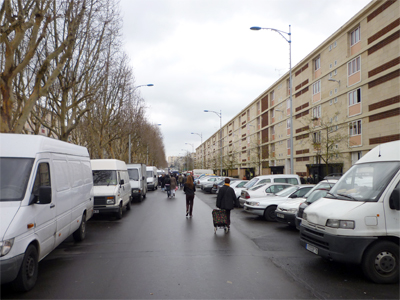
Modul V, Prof. Dr. Christian Schmid
Eine vergleichende Typologie globaler Verstädterungsprozesse aufbauen; die Mechanismen zur Erzeugung von Einförmigkeit und Vielfalt im Stadtgefüge analysieren; geeignete Modelle für die Stadtentwicklung vorschlagen.
In den letzten zwei Jahrzehnten hat die Verstädterung an Geschwindigkeit, Ausmass und Reichweite drastisch zugenommen und das Gesicht der Stadt grundlegend verändert. So, wie sie materielle Grenzen, politische Herrschaftsbereiche und soziale Räume überschreitet, macht sie sich als globales Phänomen bemerkbar und führt nach Ansicht vieler unweigerlich zu gleichförmigen Städten ohne besondere Merkmale. Demselben Phänomen verdanken sich aber auch überraschende Formen der Abwechslung, Vielfalt und Unterschiedlichkeit im Erscheinungsbild heutiger Städte. Diese gleichzeitige Ausbreitung und Vervielfältigung urbaner Formen wirkt sich stark auf die städtebauliche Planung und Gestaltung aus. Zunächst verlangt sie einen begrifflichen Rahmen, der geschmeidig genug ist, um die globalen Verstädterungsprozesse zu aufzufangen und dennoch empfänglich zu bleiben für die wechselnden Erscheinungsformen auf lokaler Ebene. Zahlreiche Studien haben diese neu entstandenen Gegebenheiten anhand von Einzelfällen untersucht; doch ein vergleichend-synoptischer Ansatz, der globale und lokale Grössen gleichermassen umfasst, fehlt noch immer.
Das hier vorgestellte Modul soll diesen Mangel beseitigen. Es wird nicht nur das Entstehen neuer urbaner Formen beschreiben, sondern auch die Verstädterungsprozesse unter die Lupe nehmen, um zu erklären, wie allgemeine Tendenzen an bestimmten Orten handfest Gestalt annehmen. Methodisch ordnet sich das Modul um historische und sozialräumliche Analysen für sieben grossstädtische Fallstudien, und zwar wie folgt: erstens entwickelt es einen methodischen Rahmen für vergleichende Analysen und stellt eine Typologie zeitgenössischer Verstädterungsprozesse auf; zweitens untersucht es die Mechanismen und Gegensätze der globalen Urbanisation; und drittens beleuchtet es die Bandbreite an möglichen Modellen für die Stadtentwicklung und erforscht deren praktische Auswirkungen. Besonderes Augenmerk liegt auf der Analyse städtebaulicher Potenziale und der Ausarbeitung möglicher Strategien für eine nachhaltige Stadtentwicklung.
Webseite des Moduls V
Modulkoordinator: Dr. Ozan Karaman